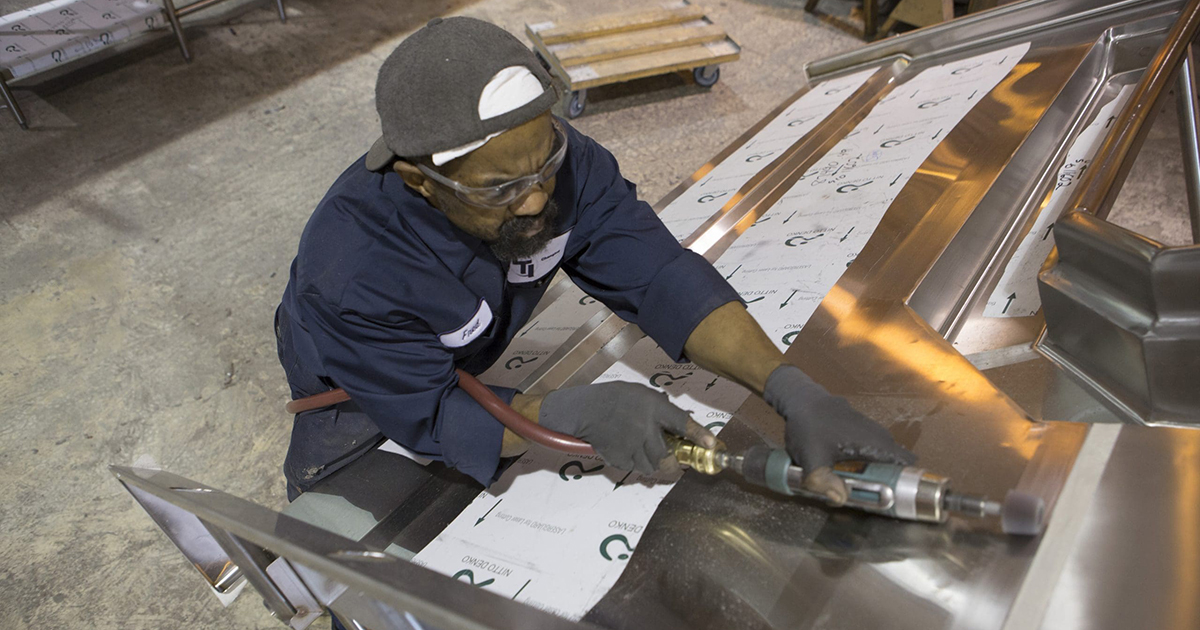Is all stainless steel food grade? Stainless steel is as much a part of the…
What you need to know about the stainless steel situation and what you can do about it

Stainless steel shortage. The phrase alone can induce stress in the heart of any manufacturer. Unfortunately, it’s a reality in today’s market that is having wide-ranging impact on manufacturers and operators alike.
Surviving — and even thriving — will take some creative adaptation.
What’s going on
What’s going on with stainless steel and other critical equipment components is complex. It’s tied to the COVID-19 pandemic, tariffs and other market forces, all of which intertwine to create a situation in which the cost of steel is high and the ability to get it is low.
COVID-related safety regulations reduced the capacity to mine minerals and produce steel — and when and where companies could produce steel, those same restrictions on ports and other transportation hubs made it difficult to ship and receive materials.
Shortages of shipping containers and a paucity of commercial truck drivers added more transportation challenges.
At the time when production and delivery dipped, consumer demand increased. People confined to their homes during the pandemic were doing more online shopping and often sought to invest in their homes through updates or renovations.
This shift put a pinch on materials like steel for commercial use as the supply was redirected to meet consumer demand.
As the pandemic has begun to recede, U.S. steel mills have been ramping up production, but they remain below pre-pandemic production levels. Demand continues to outstrip capacity, leading to long lead times and record-high prices.
“It’s an unprecedented situation because in past times when there was tightness it was because of one factor on either the supply or demand side,” said Kate Mitchell, EVP and chief marketing officer of Majestic Steel. “Now we are seeing the pull on both. Demand came back online well before supply was ready due to COVID.”
Tariffs on imported steel and aluminum, imposed in 2018, are also a complicating factor, reducing the amount of imported steel that’s in the marketplace.
In addition, consolidation in the domestic market is contributing to supply shortages. There are only a handful of major mills, and their focus is on quality over quantity at the moment, Mitchell said.
“Demand continues to surge, and the pending infrastructure bill will only compound that. We still haven’t felt the full pent-up demand on the consumer side post-COVID,” she added. “We expect the market to remain as is through the remainder of 2021. And while we do believe prices will start to come down from this year’s high, there also seems to be a new floor. There will be no going back to ‘pre-COVID’ times.”
What it means for foodservice equipment
This supply chain crunch is having an outsized impact on the foodservice industry, where a significant portion of equipment used in kitchens is manufactured with stainless steel, from the faucets to the ovens.
Foodservice equipment dealers report sporadic and wide-ranging supply chain issues, including lead times that may be up to double what they once were. Some manufacturers also are raising prices in order to offset the increased cost of raw materials.
For operators, this situation can mean an inability to get the equipment and products they need to fully reopen following the pandemic, make needed updates or open new locations.
What you can do about it
Planning ahead will be critical, often much further in advance than would be typical.
Some creativity will go a long way as well, and operators should explore opportunities to source alternative materials.
For example, serving counters typically constructed of stainless steel can instead be made of molded fiberglass.
About three-quarters of most serving counters are manufactured from steel, but with LTI’s molded fiberglass cabinet bodies, that percentage can be drastically reduced.
An 8-foot traditional counter with a stainless steel body and countertop would typically require about 75 square feet of stainless steel. A fiberglass body would cut that number dramatically, and selecting solid surface or quartz tops as an alternative would reduce the need for stainless steel to almost nothing.
Fiberglass is durable — lasting 20 years or more — and is easy to clean. The fiberglass used by LTI is manufactured locally, offering shorter lead times, and is backed by a strong 5-year warranty against cracking and splitting.
Graphics can be added and switched out as often as you would like, offering a new, fresh look to counters.
Click to learn more about the serving counter options from LTI.



